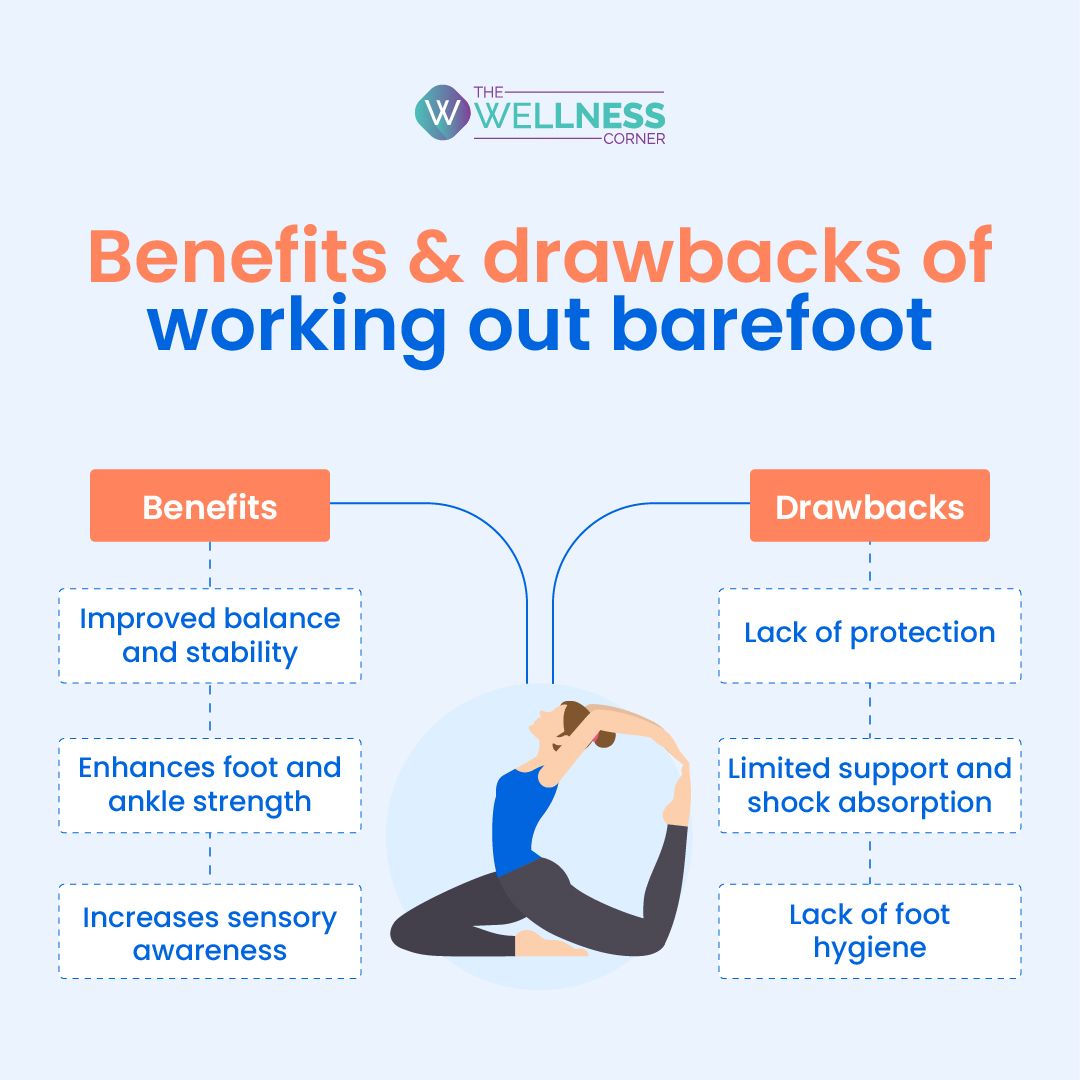Is It More Beneficial To Work Out Without Shoes?
- 21 months ago
When it comes to exercise, choosing the right gear can significantly impact your performance and overall experience. While it may seem unconventional, working out without shoes has gained attention in recent years.
Exercising without shoes taps into the fundamental connection between our bodies and the ground we tread upon. When we remove the barriers of modern footwear, our feet can finally engage with their natural environment, just as nature intended. This direct contact with the ground enhances proprioception—the body's ability to sense its position in space. In other words, you become more in tune with your body and its movements.
In this blog, we will explore the advantages and disadvantages of working out without shoes, ultimately helping you make an informed decision.
[ Must check: 5 Easy home remedies for foot blisters ]
The Benefits of Working Out Barefoot

Improved Balance and Stability
Working out barefoot can contribute to better balance and stability. Your natural foot ligaments and arches are activated when your feet are not constrained by shoes, allowing you a wider range of motion. This increased stability can be particularly beneficial during activities that require rapid change in direction or weight shifting.
[ Also read: Can faulty footwear lead to injuries, backache and more? ]
Enhances Foot and Ankle Strength
Working out barefoot can help strengthen the muscles in your feet and ankles. Shoes, especially those with cushioning and arch support, can limit the natural movement and function of these areas. When you remove your shoes, the feet move more freely, engaging smaller stabilizing muscles that are often neglected. This improved strength can enhance overall balance, stability and prevent injuries.
Increases Sensory Awareness
Our feet have numerous sensory receptors, and wearing shoes can dampen the feedback they provide. Going barefoot exposes your feet to different surfaces, textures, and temperatures, stimulating these receptors and enhancing sensory awareness. Improved sensory feedback can lead to better balance, agility, and coordination, allowing you to perform exercises with greater precision and control.
The Drawbacks of Working Out Barefoot
Lack of Protection
One obvious disadvantage of exercising without shoes is the reduced protection it offers. Without proper footwear, your feet are more susceptible to cuts, scrapes, and bruises from sharp objects, uneven surfaces, or dropped weights. Additionally, in shared gym spaces, going shoeless may increase the risk of contracting infections like athlete's foot or plantar warts.
Limited Support and Ahock Absorption
Athletic shoes provide support and shock absorption to minimize the impact on your joints. When you remove them, you lose the cushioning effect, potentially increasing the stress on your feet, ankles, knees, and hips. It can be especially problematic during high-impact activities like running or jumping exercises.
Lack of Foot Hygiene
Sweating is a natural part of physical activity, and wearing shoes can help absorb and reduce the odor associated with sweating. Working out barefoot may lead to excessive sweating, increasing the risk of foot odor and fungal infections like athlete's foot.
[ Also check: Step into the right shoes! ]
Is Working Out Barefoot Right for You?
Determining whether working out barefoot is right for you depends on factors like personal preference, foot health, exercise type, training environment, and expert guidance. Consider your comfort, foot condition, exercise preferences, and training environment, and seek professional advice to make an informed decision. Gradually transition to barefoot training if you decide to try it, listening to your body along the way.
Remember, individual variations exist, so consult with professionals to ensure your goals and well-being.
Where You Should Not Train Barefoot?
Before deciding to work out barefoot, it's crucial to consider various factors, including gym policies, safety concerns, and hygiene conditions. Some gyms may have dress codes that require footwear, and this should be respected. Additionally, it's essential to assess the training environment for any irregular surfaces or potential safety hazards that could pose a risk to your feet.
Maintaining good hygiene is also essential, so ensure that the space you plan to train in is clean and free from any debris or contaminants that could affect the cleanliness of your soles. By being mindful of these factors, you can make a more informed decision about whether working out barefoot is suitable for your specific situation.
[ Attention: Have you checked your feet today? ]

Conclusion
Working out barefoot can potentially offer various health advantages; however, it is crucial to ensure a safe and clean environment before opting for this practice. Moreover, individuals need to assess their comfort level and seek guidance from a healthcare professional if they have any concerns or uncertainties regarding their workout footwear.









